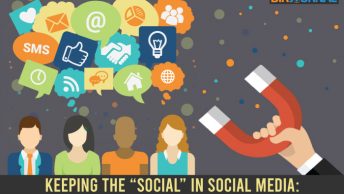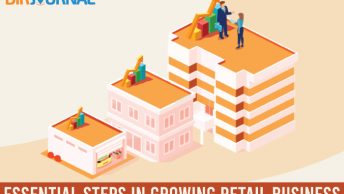These days customers reward those companies that satisfy their needs and reject those that are not responsive to their needs and expectations. This article will take you through the process of setting up a customer service plan in your company starting with an assessment of your current customer service approach.
Then, we deal with determining what your customers’ requirements are, creating a customer service vision with customer-friendly policies, methods for dealing effectively with your customers, and advice for educating the rest of your organization to carry through your customer service focus.
What is Customer Service?
Customer service is meeting the needs and expectations of the customer — as defined by the customer. Let’s break that down:
Meeting the needs and expectations of the customer. This means that you know what your customers want, what they expect, and you provide that to them on a consistent basis. And to know what your customers want, you have to ask them!
As defined by the customer. This is the key phrase. It says if the customer does not perceive you as offering good customer service, then you are not. The customer is the judge here; no matter how good your internal records claim you are, the customer is the only voice worth listening to.
So in order to have an effective customer service initiative, you must know what your customers want, provide it to them on a consistent basis, and ask them how you are doing.
Benefits of an Effective Customer Service Initiative
You, your employees, and your organization can benefit from customer service in the following ways:
In Daily Business
There are a few things in which a good customer service plan can benefit you directly.
Less stress. If you are dealing with customers directly, especially unhappy ones, there will be a certain amount of stress with each episode. You can reduce it if you have a systematic way for dealing with your customers.
Higher efficiency. When you focus your efforts on areas that directly affect customer satisfaction, you can utilize your resources more efficiently. An effective customer service program provides a plan for working on those areas most important to your customers and reduces the deviation which may distract you and your organization from focusing on these areas.
Increased morale and satisfaction. When you are working on those areas that mean the most to your customers and to the success of your organization, then you will share a common vision and meaning with your entire organization.
In the Long Run
Good customer service doesn’t just improve the every-day workings of your business. The customer experience has never been this important.
Cost-effectiveness. According to surveys, it costs five times more to gain a new customer. The same survey also proves this fact that with just a 5% increase in customer retention, a firm can raise its profitability by 25% and in some cases as much as 85%. Similar studies also show the longer a company keeps a customer, the more money it will make. This happens because consumers spend slowly at first, but with succeeding years of good experiences, they will spend increasingly more.
Competitive advantage. Fierce competition demands more and more innovations to differentiate organizations from one another. With technology available to virtually all organizations today, whether online or off-line, traditional feature and cost-benefit advantages no longer offer for a sustainable competitive advantage.
Survival. Effective customer service becomes the cause of your staying in business. With growing competition, there are plenty of suppliers eager for business and the opportunity to satisfy customers. If you are not one of them, you may not stay in business for a long.
More and more companies are turning to quality of service to make themselves prominent from their competitors. They are talking to their customers to determine what is most important to them and how they can further add value to them.
Steps to Create a Customer Service Plan
Each organization’s customer service plan must be customized to suit its own needs, but, more importantly, it must satisfy the needs of its customers. There is no hard and fast rule for an effective customer service programme; each one will have its own distinct differences. However, there are some common steps that you need to consider when setting up your programme. They are:
1. Assess Your Customer Service Quotient
In order to establish an effective plan to focus on customer service, you need to know where you start from. Following is a self-assessment that, when completed honestly, will begin to point out opportunities for improving your customer service efforts.
For each statement, rate how well you or your organization satisfies the condition using the following points scale:
- Never — 1 point
- Hardly ever — 2 points
- Sometimes — 3 points
- Usually — 4 points
- Always — 5 points
Note: If you are a one-person office, answer from your own perspective. If you are an organization with several employees, answer the questionnaire from your organizational perspective.
A. Customer-Centric Culture
- We’re committed to do whatever it takes to create satisfied customers.
- We try to do things right from the very beginning.
- The owner provides the leadership philosophically and by example that customer service is important.
- Serving our customers’ needs is more important than meeting our internal needs.
Total Score divided by 20 = ___%
B. Customer Alignment
- When we sell, we aim for a partnership approach.
- In our collateral materials, we don’t promise what we cannot deliver.
- We know the features and benefits that are most important to our customers.
- We design new products/services based on info provided by our customers.
Total Score divided by 20 = ___%
C. Error Reduction
- We review customer complaints.
- We constantly ask our customers for feedback.
- Periodically, we look for ways to eliminate errors based on customer input.
Total Score divided by 15 = ___%
D. Using Customer Information
- We’ve determined what our customers expect from us.
- We frequently interact with our customers.
- The entire organization knows what is important to our customers.
Total Score divided by 15 = ___%
E. Customer Outreach
- It’s easy for our customers to contact and deal with us.
- We aim to resolve all customer complaints.
- We encourage “wowing the customer.”
Total Score divided by 15 = ___%
F. Qualified and Empowered Staff
Answer this only if you have a staff.
- We respect our employees.
- All employees have a good understanding of our product/service.
- We give all of our employees the right tools and skills to perform their jobs well.
- All employees are encouraged to resolve customer issues.
- All employees feel that customer satisfaction is a responsibility of their job.
Total Score divided by 25 = ___%
G. Improving Products, Services, and Processes
- We constantly work to improve our products, services, and processes.
- We network with other groups to learn from their strengths and weaknesses.
- When problems are identified, we quickly try to resolve them.
Total Score divided by 15 = ___%
Source: Adapted from The Forum Corporation’s Self-Test for a Customer-Driven Company.
Now evaluate how well your organization focuses on customer satisfaction. Note the areas where you score high and those where you are low. The low scores will suggest opportunities for improvement. List three areas you need to improve.
2. Understand Your Customer’s Requirements
Without understanding what your customers actually want and require first, an initiative to improve customer service is unlikely to be successful.
Often organizations claim to know their customers’ requirements, yet they’ve never taken the time to do a real thorough analysis. Sure, they probably know their customers’ general requirements, but do they know what is really important to their customers? How do they measure up relative to the important factors and how they compare to the competition in the areas most important to the customer?
In most cases they don’t, and won’t, unless they collect this information in a formal, systematic manner. There are two basic sources of that information: Internal data and customer data.
Internal Data Sources
Begin your search for customer data in-house. Most likely you’ll uncover some things that you can fix immediately, which will make your customers happy and get you started on the right track.
Key Operational Data
Without looking too far, you’ll be able to uncover potential areas of customer dissatisfaction by reviewing your key operational data. Check on the status of backlogs or stock outs. Chances are if these are significant you may have some customers that are not happy with your delivery cycle time.
Review your “Returns and Allowances.” If they are high, then your customers may be unhappy with the product they purchase–either the quality is inferior or they felt the product was misrepresented and not what they expected at all.
Internal Reject or Yield Rates
If your rejects are high or your yields low, you can bet that some bad product is leaking out to your customer. Even if you inspect the product before shipping it to the customer, tests have shown that inspection isn’t 100% reliable–some bad product will sneak out.
Service Metrics
Consider your local telephone company. Customers are typically concerned with the turnaround time for performance of service. The telephone company could review its internal records for the average turnaround time. If it’s excessive they probably have some unhappy customers. Another measurement to look for us the number of times they must re-do a service. Customers expect you “to do it right the first time.” If you don’t they become unhappy.
Your Employees
Don’t forget your own employees as a valuable source of information on customer requirements. They interact with customers constantly and probably know a great deal about their likes and dislikes.
If you are a one-person organization, then you are the one dealing with customers. You know what’s going well, what needs fine-tuning, and what needs a major overhaul.
Using Internal Data
Review your internal data to pinpoint potential problem areas for customers. Also, gather your employees together and get their inputs on your customers’ satisfaction level. Assemble a list of strengths and weaknesses, but don’t get bogged down in the details. You’re looking for a few areas where you can begin making improvements.
Customer Data
You should start with a review of customer complaints and inquiries. If you don’t have a systematic way of collecting these, you should develop one. Both are good indicators of opportunity areas. However, don’t limit yourself to just complaints and inquiries. Studies show that only 2-4% of dissatisfied customers ever complain. If you’re only looking at complaints, you’re missing the other 96-98% who have problems with you.
Run Surveys and Focus Groups
Surveys and focus groups are two of the most popular methods for gathering information on customer needs. Surveys are written questions given to individual customers; focus groups are oral questions administered to groups of customers. Both must have clear and specific goals up front in order to be successful.
A broad questionnaire or focus group session provides you with a lot of information, but it’s usually too general to be of any value. Objectives must be clear and questions specific if they are to provide results that can be acted upon. Although focus groups and surveys are similar in what they want to accomplish, one may be more suitable than the other, depending on the application.
Surveys are relatively simple and economical to administer and can reach large amounts of customers, but the information can sometimes be limited since it is a one-way exchange of information.
Focus groups, on the other hand, take more time and effort and are often more expensive to administer. They may not be as far-reaching as surveys, but their interactive nature produces clearer feedback. The best results are found when combinations of both techniques are used to identify customer requirements and expectations.
Review customer complaints and inquiries. Identify the top three requests and compare them with the list you created from your internal data and employee inputs. Do you find any overlap? Any surprises?
What Data Is Relevant?
More is not necessarily better when it comes to customer data–getting the right kind of data is critical. After all, this is what you ultimately base your customer service plan on. Following are the key characteristics of good customer service data:
- Timely and periodical
- Specific and focused
- Weighted
- Comparison with competition
Here’s more on what we mean by that:
Timely and Periodical
One thing is certain, change is going to happen. Your customers may change; their needs may change; the environment may change (e.g., the competition gets tougher regulations change); and most certainly you will change.
As you improve, your customers expectations will likely rise, too. To respond to these changing needs, you’ll need to constantly assess your customers. If you’re working with old data, it may no longer reflect what customer sentiment looks like right now. Without historical data, on the other hand, you won’t see trends.
How often you assess your customers will depend on your business, its sales volume, and the relative value of its product or service.
For instance, a fast food restaurant that sells thousands of hamburgers a week may survey its customers continuously while a large equipment manufacturer that sells only a few pieces of equipment each month may survey customers once-a-year.
Specific and focused
In order to make the kind of improvements your customer will appreciate, you’ll need to have specific feedback. While general inputs may give you an overall tone of the customer, you can only respond to specific feedback. For instance, rather than “The length of time that I have to wait in line is satisfactory”, try instead “How much time is satisfactory to wait in the line?”
On the other hand, organizations have limited resources. While the problems can be overwhelming, you can realistically focus on just a few. If you try to do too much, you might not do anything well.
Weighted
This will help to narrow down the list of opportunities to just the few on which you should concentrate. You can rate the relative importance yourself–but it will be much better if your customer does it.
Comparison with Competition
You should always know where you stand in comparison to your competition. If your customers are willing to provide you with that feedback, take it. And you won’t need a separate survey, either. When you ask your customer to rate your performance, ask them to rate your competition as well.
3. Create Your Customer Vision and Service Policies
In order to transform your company into one that values customer satisfaction, you must establish a customer-centered vision for your company. So what is a vision, exactly?
What Is a Customer Vision?
According to Richard Whiteley of The Forum Corporation, a vision is a vivid picture of an ambitious, desirable future state that is connected to the customer and better in some important way than the current state.
In other words, your vision is what you want your organization to become, what you want it “to grow up to be.” And a client-centered vision is one which takes its direction from the customer.
A vision has two critical functions that it performs. First, it serves as a source of inspiration that rallies the organization around a single unifying purpose, which in this case is the customer.
The second duty a vision performs is that it guides decision-making and aligns an organization so that all functions work towards a single goal. In the business world, there are rarely black and white decisions to make, but there is an awful lot of gray.
With a vision that spells out what the organization wants to become, it provides direction needed to make better decisions. After all, an employee who knows where the business wants to head is more likely to make decisions that reinforce that goal.
So how do you create a vision for your customer service plan?
Creating a Customer Vision
Vision statements need not be elaborate. For instance, Ray Kroc’s vision for McDonald’s was “Quality, Service, Cleanliness, Value.” Keep your vision short and concise so that your organization is clear on the meaning.
Many companies make the mistake of trying to create journalistic masterpieces. The only problem is that they tend to be so long, no one in the organization really knows what it means. The hard part in creating a vision is deciding what you want your organization to be in the future. Some advice on how to get started is:
- Imagine it’s ten years from now. You are reading an article in a magazine about your company. What successes have you had? What can you attribute the success to?
- Think about what is important to your organization. List your top five.
- Put yourself in your customer’s shoes. What is most important to you? Close your eyes and visualize your organization in the future. Describe in detail what makes up that picture.
You now should have a good start on your customer-centered vision. Take a few moments and write it down.
Establishing Customer-Friendly Policies
There isn’t anything that makes a customer angrier than someone saying, “I’m sorry, that’s our policy.” In many cases policies exist because “that’s the way we’ve always done it before.”
Take an inventory of your organization’s policies. Do they facilitate customer satisfaction or do they only erect barriers and cause customer frustration? If you’re having difficulty identifying these “unfriendly” policies, review your customer complaints and assessments.
A quick scan of customer complaints and assessments is sure to direct you to some of these “unfriendly” policies to address in your customer service plan. Now segregate your “friendly” and “unfriendly” policies into necessary and unnecessary groups.
Throw out Unnecessary “Unfriendly” Policies
You don’t need them and they are most likely immensely frustrating for your customers. For example, if you own a commercial cleaning service and “We don’t do windows,” get rid of that policy immediately.
Businesses hire you to clean their premises, and if there isn’t a health or legal reason for not cleaning windows, you better think about cleaning them. Otherwise, they’ll find someone else who will.
Make Necessary “Unfriendly” Policies Palatable
It’s certain that you will have some “unfriendly” necessary policies that your customers may not like, but that you are legally bound to have.
You can’t do much about these in your customer service plan except make them as “friendly” as possible. For instance, if you’re cleaning healthcare facilities, and your insurance company restricts you from disposing of certain medical wastes, inform your customers of that and the reasoning, but do investigate if there is some sort of compromise you can make, say, dispose of it once it has been properly contained.
Strengthen “Friendly” Policies – and Create More
Keep your “friendly” necessary policies and strengthen them even more if you can. Finally, create more unnecessary “friendly” policies where possible. This might be offering your “extra special clean-ups” on a 24-hour basis.
You can include customer friendly policies in your service plan as a competitive edge and keep your customers coming back for more.
Now, take a few moments and, together with your customer complaint and feedback data, revise your policies to be customer-friendly. Are there any additional “policies” that you can institute that would further differentiate you from your competition?
4. Deal With Your Customers Effectively
Now, once you’ve established your customer-centered vision and created customer-friendly policies, you are ready to sharpen your skills necessary to deal effectively with your customers. These skills can be segregated into two areas — communication skills and problem-solving skills.
Communication Skills
How you communicate to your customers is just as important as what you communicate. Following you will find some behavioral skills important for your customer service plan. With them, you communicate to your customer that you are an organization that values having their business:
- Greeting your customers
- Valuing your customers
- Asking your customers how you can help them
- Listening to your customers
- Helping your customers
- Inviting your customers back
–adapted from Ron Willingham’s “Hey, I’m the Customer”
Now let’s look at these skills in a little more detail.
Greeting Your Customers
“Put me at ease and make me feel comfortable!”
When your customer or prospective customer first walks in or telephones you with an inquiry or order, make him feel welcomed. This sets the tone for the rest of the transaction. If this is the first time with this customer, this is when first impressions can help – or hurt.
It all depends on how well you make your customer feel within those first critical moments. If favorable, he’ll continue talking, browsing, or ordering. If unfavorable, you may have lost a customer forever.
Valuing Your Customers
“Let me know that you think I’m important!”
Customers want to feel special, and to make them feel special your attitude and behavior must say, “You’re the customer–you pay my salary. You make my job possible.” When you value customers, your sincerity makes them feel good about you and your organization. A customer-focused organization is not in business to deliver a product or service, but, instead, is there to enable people to enjoy the benefits of its product or service.
The difference is demonstrated by a good temporary employment agency. They’re not in business to fill in job vacancies with temporary personnel, but rather to help their customers enjoy the benefits that their service provides–immediate placement of highly skilled individuals. The difference is subtle, but the effect is not!
Asking Your Customers how You Can Help Them
“Find out what I want!”
You’ve already gotten a “head start” on that by reviewing customer complaints and other feedback, but it is important to make each customer encounter one that makes them feel special.
You do that by trying to understand their needs each time you deal with them, not just their overall needs, but their needs at that particular moment. A desire to genuinely understand your customers’ needs and wants will provide you with the edge you’re looking for.
Now, how do you do that? Simply, find out why they came in or contacted you–“So what can I do for you today, Mr. Jones?” Then ask open-ended questions to further understand their needs–“Are you looking for any special features in a briefcase? How often will you be using it?”
Listening to Your Customers
“Please listen to me and understand me!”
Listen totally–to your customers’ words, their tone, and their body language. According to a UCLA study on communication, only 7% of our communication is verbal, 38% is tone of voice, and 55% is nonverbal. Listening totally will enhance your understanding of what your customer really needs as well as make them feel valued.
Helping Your Customers
“Help me get what I want!”
Customers don’t buy products and services for what they are, but, instead, they buy for the benefits that the products and services offer. That’s why you must be customer-focused rather than product- or service-focused.
Don’t waste your time explaining your product or service features. Explain how your product or service benefits them–how it satisfies a need, solves their problems, or gives them extra value. Instead of “Super Duper Carpet Cleaner offers the latest in stain-resistant technology,” you should try “Super Duper’s newest technology continuously repels stains for up to 20 years–you’ll never have to clean your carpets!”
Inviting Your Customers Back
“Let me know that I’m welcome back anytime!”
This is about last impressions. Thank them for coming in or contacting you. Tell them you’d like to see them (or hear from them) again. Then, try to do something that makes them want to come back (or refer you to a friend or colleague)–maybe a discount off of their next appointment for referring a friend.
The interesting thing about last impressions is that’s how your customers will feel about you until you have a chance to interact with them again. If you do it right, your business will surely reap the benefits.
Draw up two columns. List each of the communication skills in the left-hand column. Think about how you can improve each in your business. In the right-hand column, write down what you are going to do, post it so you (and your organization) can see it, and begin doing that immediately.
Problem-Solving Skills
Problems will always occur, but taking responsibility for these problems can turn a negative customer into a positive one. Studies show that if a problem is resolved quickly, 98% of your customers will buy again and even tell friends and colleagues that they had a positive experience!
However, the longer the problem drags on, the more frustrated a customer becomes, and the less likely they are to be satisfied. So how do you resolve problems quickly? There are four basic steps to it:
- Understand the problem
- Identify the cause of the problem
- Discuss possible solutions
- Solve the problem
–adapted from Ron Willingham’s “Hey, I’m The Customer”
Read on for a process you can use as part of your customer service plan to help you solve problems to your customer’s satisfaction.
Understand the problem
“Try to understand my problem from my viewpoint!”
First, “get the facts, Jack!” Listen nondefensively. Then, repeat your understanding of the problem back to make sure it is accurate.
For example, your customer is having a problem with the juicer that you sold her. You listen to her problem nondefensively, probing her for more information, then say, “As I understand the problem, the juice that is extracted does not have any pulp.”
Identify the cause of the problem
“Take enough time to understand what caused my problem!”
After you understand the problem, you’re ready to identify possible causes of the problem.
First, you should find out what happened (“I made the orange juice according to the enclosed instructions.”). Next, you need to find out what should have happened (“There should have been pulp in the pulp reservoir.”). Then, find out what went wrong (“There wasn’t any pulp in the reservoir, or any place else that I could see!”).
Discuss possible solutions
“Explore possible solutions with me!”
At this time you should suggest possible options (“You may not have the model that removes the pulp from the juice, maybe the wrong instructions were enclosed, or maybe the juicer has malfunctioned.”)
Next, you should ask your customer for ideas (“Do you think it is a malfunction or is the wrong model/instructions enclosed? Do you have any other ideas?”). Finally, agree on a course of action (“Let’s first check the model numbers to make sure that the instructions are for your juicer.”).
Solve the Problem
“Solve my problems, and you’ll enjoy my loyalty forever!”
Now it’s time to remove the cause or take corrective action (“Ah ha! The model numbers don’t match. The instructions are for our higher end model that doesn’t extract the pulp separately, but feeds it into the juice automatically. Do you want to keep this model, and I can send you the appropriate instructions? Or would you prefer the lower end model with a cash refund for the difference?”).
Now, ask your customer if he is satisfied with the resolution (“Have we solved your problem satisfactorily? Is there anything else we can do?”).
Finally, the kicker–offer something to the customer to compensate him for his troubles. This is an important part of every customer service plan. (“And for your troubles–we’ll be sending you a bushel of fresh Florida oranges that should arrive at your home next week. Again, I’m sorry for the problem this has caused you, but thanks for letting us resolve it.”)
Write down this four-step problem-solving process. Commit it to memory and post it so that you can use it the next time you run into problems.
For more on problem-solving, read: How to Handle A Customer Who’s Just Plain Wrong
5. Educate Your Staff
Now that you’ve learned to assess your current customer service condition, understand your customers’ requirements, create a customer-centered vision, establish customer-friendly policies, and deal with your customers more effectively, you need to educate your staff (if you have one) on how to carry out your customer service focus. This will involve two steps, which are communicate and train.
Communicate Your Focus
Schedule a meeting to roll out your vision for your organization and to explain the reasoning behind your customer service focus. Make this meeting mandatory–for success, you need to get your staff’s full cooperation and buy-in. After all, the vision and policies in your organization’s customer service plan must become theirs, not just yours. At the end of the meeting, determine the next course of action with responsibilities and timing noted.
Note: This should not be the only time that you talk to your staff about the importance of a customer focus. You must work it into your daily routine, your regular meetings. It must become the basis for your entire business. And you must demonstrate by example–“Walk the talk!”–to reinforce the fact that things are going to be different from now on.
Training
In order to achieve the customer-centered vision of your customer service plan, your staff must be properly trained to do so. As mentioned earlier, some of this training can be incorporated into existing meetings.
It’s important that you do include some training in your regular meetings so that it becomes a part of your normal operations. However, you’ll find you’ll need to schedule an incremental amount of time to train personnel in problem-solving and communication skills.
Again, so this isn’t the “boss’s program,” suggest that a team of volunteers determine the organization’s training needs and outline a suitable approach. Then, have them present it to the rest of the organization in an upcoming meeting.
Now you’re off to transforming your organization to one that is customer-centered! Good luck — and have fun creating your customer service plan!
Image credit: shutterstock














i am passionate about serving the customer, being a people person makes that easy for me, however you have so much to teach and i like for simple format, never to old i guess.
johanna
im looking for a customer sevices provider who will answer phone call for me please call me at 8016962307
i am passionate about serving the customer, being a people person makes that easy for me, however you have so much to teach and i like for simple format, never to old i guess.
johanna
A very good easy to follow article.
A very good easy to follow article.
one great essay i love it.
i have a quastion what is the name of the writer…..
one great essay i love it.
i have a quastion what is the name of the writer…..
Great information, thanks for putting all this together in a post. It is a definite resource.
Great information, thanks for putting all this together in a post. It is a definite resource.
I am interested in creating a work plan for my staff taht identifies the team’s goals and how they will be measured to deternime success. Please guide me through this.
I am interested in creating a work plan for my staff taht identifies the team’s goals and how they will be measured to deternime success. Please guide me through this.
very practical
thanks very much it is very usefull for me it helps me to make my assingment
plz lakhbir can u help me assement [email protected]
Its all true that customers will reponse those companies those fullfill their needs and satisfied the customers otherwise customers will reject the product or services of those companies those don’t satisfied the customers.If companies care the customers then surely customers will care these companies and vice versa.
Regards
http://gfsoul.com
i would like to create one annual plan on customer survey, customer forums, customer evenings and customer week but am failing on how to approach it. Please advise.
Thanks very . am interested in creating a work plan for my staff taht identifies the team’s goals and how they will be measured to deternime success.
Thanks
Nishantha
Very good very informative thanks for putting them together
A strong customer service team is a necessary part of running a successful business. Your customer service team represents your company through direct contact with your customers. This team should make your customers feel like they are welcome in your business.
A great article, this will help to improve my customer service skills at my work place. thanx.
This article is very insightful and I have learned a lot thanks to it. The next step will be a bit more challenging, as I will need to put this into practice whilst applying it to a specific service within the organisation that I work for.
I think your comments in this article are ok, however I have trouble accepting your fundamental definition of Customer Service because I strongly believe you completely miss the point. When you, and many others, most commonly use and have been using such erroneous and ‘ridiculous’ definition, all our consumers in our society gradually get confused; resulting in most organizations not caring for their customers and just focus on getting extra money off whatever they do. Let me challenge you with this example:
When you say: “… as defined by the customer” I will present myself as a customer who is looking to buy, say a cell phone. My needs are clear and my expectations are a lot, among which I expect to pay less than $10 for any phone presented to me (from iphone to most expensive ones int he current arket). However, I will not get my price; so are you saying that none of these companies cannot meet my expectations? And in order to do so, they must offer my price?
this is just lovely
Great insight – great confirmation
Very good material.
very informative